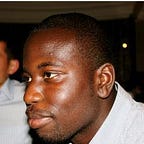What I’ve learned watching Bevel
(Or some thoughts on the “X for [insert demographic]” business model)
Over the past few years, I’ve seen many companies seek venture funding that target a particular demographic (primarily Black and Latino men and women). I think a lot of these companies have real promise to build meaningful businesses.
Many great companies arise by serving markets that are fundamentally broken. Minority consumers are at the center of many broken markets because, by virtue of being minorities, we are often not the default persona that products and services are designed for. This brokenness creates opportunities to build businesses with offerings crafted specifically for our needs. There are also a number of related benefits to focusing on minorities:
- We tend to overindex on digital media consumption, which allows for greater virality and thus lower blended CAC.
- We are often tastemakers for a broader swath of American society, which expands the addressable market.
That being said, I think some companies in the space have been better conceived than others. Probably the shining example of a company that has done nearly everything right is Walker & Company, led by Tristan Walker. I’ll touch upon two areas that I think are particularly instructive about his approach (as seen by an outsider — Walker & Company is not a portfolio company of ours, so I have no special insight).
1. Selected for a large enough category to build a venture-sized business
Unfortunately, one of the issues of targeting a minority consumer segment can be scale. If you’re looking to serve a portion of the population that’s 10% of the total, then unless you’re focused on an area where that demographic overindexes, you have to assume you’ll be targeting an addressable market that’s 10% or less of the total. And in some businesses, scale is the name of the game — which can make it hard to build a valuable standalone business focused on a small slice of the overall pie.
You might look at Walker & Company’s Bevel, which focuses on the black male consumer today, and say the same thing initially. After all, though shaving is a $3B market, 10% is just $300M. In fact, given Bevel’s premium price point, the effective market size might look more like $200M. While not non-existent, most VCs rightfully don’t see $200M markets as a wellspring of companies with >$1B+ market capitalizations.
However, I think there are three points that change the outlook a bit:
- Poor experiences often shrink markets — and great products and experiences can expand them. In the same way that Uber is now stealing dollars from not just taxis, but other transportation substitutes (cars, public transport, etc.), Bevel provides such a better experience that people who grew out beards due to razor bumps or shaved using some non-razor tool are becoming shaving consumers again.
- Great products also appeal to those outside of the narrowly defined core demographic — again expanding the addressable market. Put another way, men with coarse hair aren’t the only ones who appreciate a well delivered shaving experience.
- Walker & Company has never defined itself as a shaving company — rather, their goal is to create a P&G for people of color. That likely means not just men’s razors and shaving accessories, but many other health, cosmetics, and wellness categories where minorities have been underserved. Nearly every day, I see consumers on my Twitter feed begging Walker & Company to move into related products (e.g., T-blades, women’s natural hair products, etc.). While of course this battle is yet to be fought — there’s reason to be confident that should they succeed, this could be a very big business.
2. Selected for a unique set of needs that the “default” can’t capture well
As I mentioned above, many products aren’t made with the minority consumer in mind. But that doesn’t necessarily mean that all products don’t serve minority consumers adequately. For instance, you could build Twitter for black people — but Twitter already does a pretty decent job of being Twitter for black people, based on engagement numbers. So the companies with the best chance of success likely are targeting needs where designing for the default has real consequences.
In Bevel’s case, there are clear reasons why standard razors don’t work well for people with curly hair — with many similar examples that abound in the health and cosmetics space. Not only this — but the few products that do exist are often poorly merchandised and generally lack the “care” that the branded players in these spaces display.
Contrast that with Bevel, which is Apple-like in its attention to every detail of the customer experience and brand presentation (no accident that Ron Johnson is an investor in the company). The company combines this care with a brand aesthetic that deeply resonates with their audience. As some of the eCommerce success stories in our portfolio have also demonstrated (e.g., Honest, Casper), attention to customer experience and a unique brand message pays dividends over the long run.
To wrap up — I think minority focused startups have the potential to solve a lot of important problems. However, I think the large, venture-fundable successes will exist at the intersection of large markets and real problems unique to our communities.
I’m excited for the next wave of companies that are rising in this space — and would love to hear any thoughts on the above (@ablordesays).
